Jan 9, 2025
The Pros and Cons of Popular Siding Options
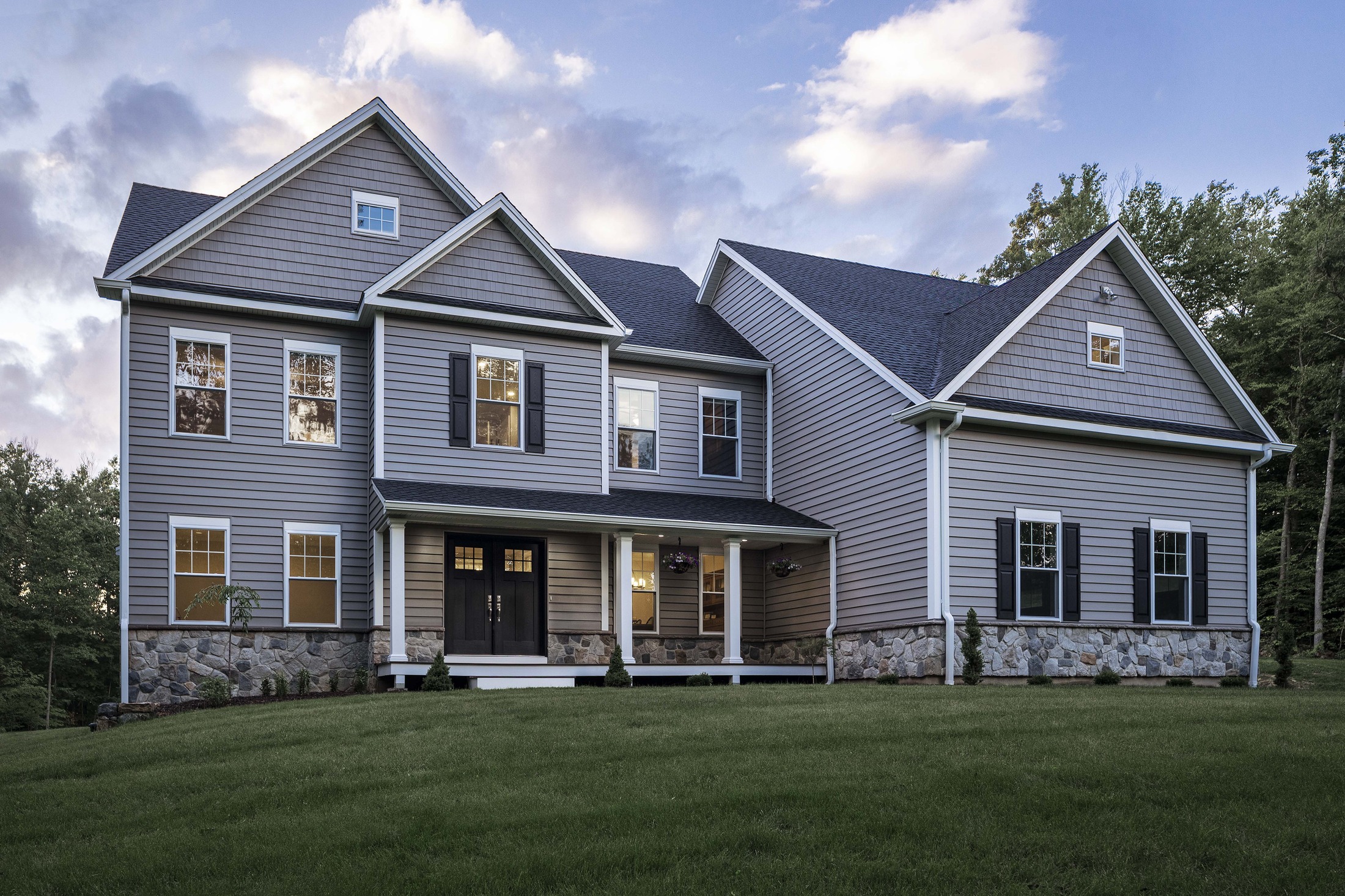
Replacing your exterior with one of the popular siding options can turn your house into what looks like a brand new home — no need to move! More than any other exterior product, siding is the most highly visual and impactful exterior renovation.
A home’s exterior walls can be wrapped in many different siding materials. Read on to learn more about the pros and cons of popular siding options.
Brick Veneer
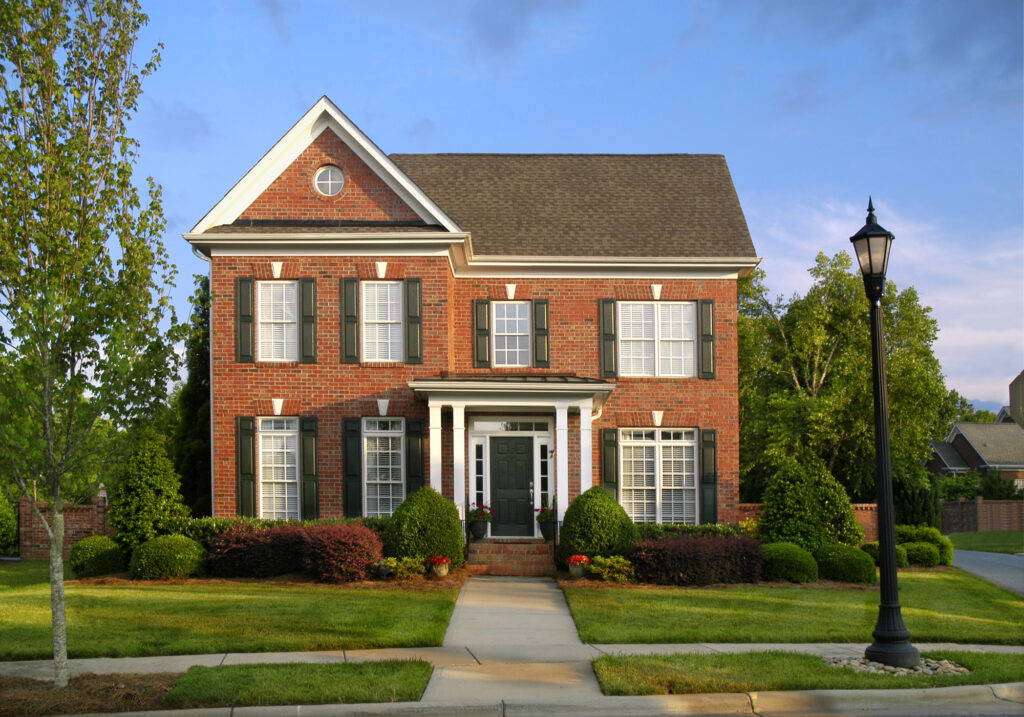
Pros:
On many homes that are built nowadays, you’ll notice that brick veneer is only used on the front-facing exterior wall, while the other three sides are typically wrapped in a different form of siding. Brick veneer is thin slices of brick, applied over the layer of house wrap with a mortar.
Veneer functions as siding versus solid brick that functions as the main building support.
There’s different kinds of brick that are used to build, which is why you’ll see variations of color. Some might be much more red, while some might skew more tan. Always identify the repeating primary color of the brick you’re using and take that into consideration when planning the rest of your exterior facade and color scheme.
All in all, brick is typically a very low maintenance choice and is one of the few exterior materials where pressure washing won’t cause any potential damage.
Brick veneer facades are actually quite easy to refresh with paint. It can completely transform an old, dark, more traditional looking exterior into something bright, with added personality. The most common painted brick colors typically include white, black, or grey.
Cons:
Upkeep of brick may require skilled masonry work, as it’s not something typically recommended as a DIY fix.
Keep an eye out for signs of any cracks beginning to form — an indicator of potential trouble, especially for water seeping in and causing damage to your interior, or pest infiltration.
Stucco
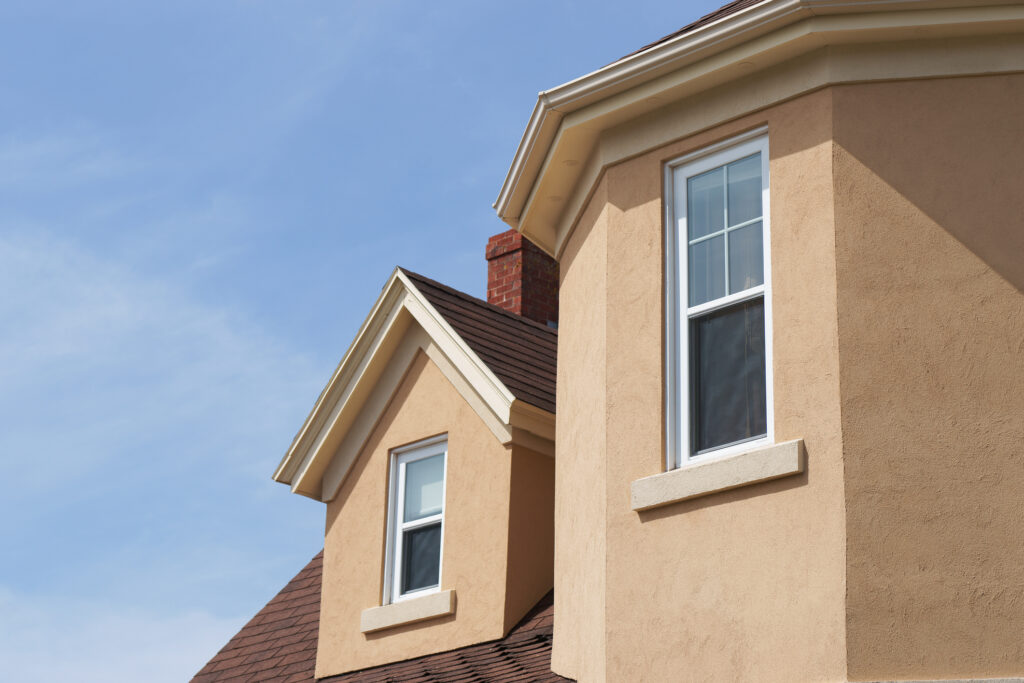
Pros:
Stucco, a form of siding traditionally made from cement, lime, and sand, is one of the popular siding options in areas that experience extreme heat like Las Vegas, South Florida, and Arizona.
Stucco is a more affordable option for those looking to keep renovation costs low, and low maintenance.
The color pigment can be mixed into the stucco directly, as opposed to the stucco being painted after installation — very similar to the phrase “dyed in the wool,” which is when the wool is dyed and then the article of clothing is made.
Synthetic stucco, or EIFS, is more energy efficient but if not done properly where the home can wick or release moisture it can lead to big problems like mold mildew wall rot.
Cons:
Stucco is a more affordable product, yet high labor costs will raise the overall investment.
This material choice can also be a culprit for serious mold issues, if not properly maintain and installed.
Stucco is also prone to discoloration due to its porous makeup, especially around and under fenestrations like windows or doors. Rain water picks up dust, debris, sediment, and soot, which then trickles down the stucco.
Stone Veneer
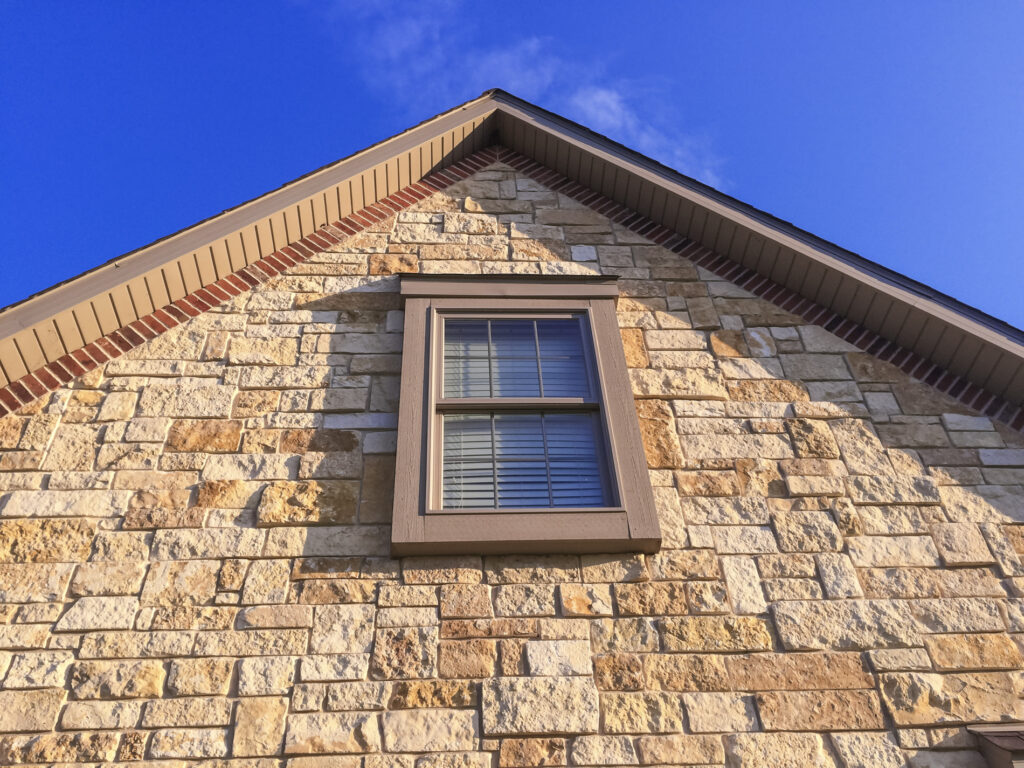
Pros:
Stone veneer is one of the popular siding options that pose the most natural and long-lasting look. Similar to brick veneer, stone veneer is made from thin slices of stone adhered to house wrap with masonry. Color and tone repetition is important when using stone on your exterior facade to ensure it compliments things like the roof, windows and doors.
Aside from an enhanced curb appeal, natural stone is extremely durable, resilient to weather conditions, and low maintenance.
Types of stone that you might typically see on the exterior of homes could include limestone, granite, sandstone, slate, fieldstone, and more.
If you’re looking for that real stone look at a more affordable price point, vinyl stone siding would be your best bet.
Cons:
Stone is a more expensive exterior option that requires a professional when it comes to installation and any other maintenance needs.
Vinyl Siding
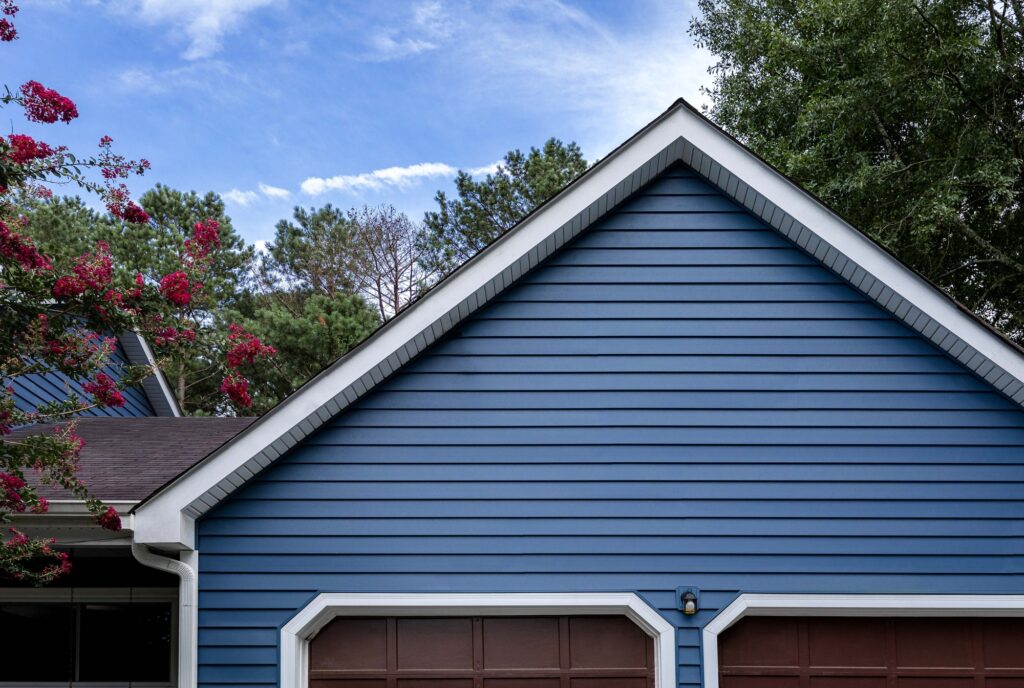
Pros:
Vinyl siding presents one of the most versatile, customizable and low maintenance popular siding options.
There’s not much you need to do for vinyl siding to function properly, but what you can choose to do is keep the surface clean. Use a mild, soapy water solution (steer clear of any harsh or astringent chemicals as it will ruin the finish!) paired with a brush or sponge to rid the surface of any unwanted pollen, grass clippings, or debris.
Some homeowners choose to pressure wash their siding, but beware of setting the PSI (pounds per square inch, or the force of the water) too high as it can severely damage panels.
Styles include:
- Straight
- Shiplap
- Clapboard
- Dutch lap
- Board and batten
- Cedar shake
- Scallop
- Faux stone
Depending on what style of vinyl you choose and how many square feet it’ll cover, it will ultimately result in either a lower or higher overall cost.
If you’re looking to install siding, it’s key to upgrade to insulated vinyl siding. Even though insulation already exists in most interior and exterior walls, insulated siding provides additional “R-value”— the higher the R-value of your insulation, the more energy-efficient your home can become.
An additional advantage to choosing insulated vinyl siding is the panel is bolstered by a foam or cellulose backing. If an object hits vinyl siding in a cold weathered area, it could easily crack. However, insulated vinyl siding lowers the chance of real damage occurring.
Cons:
Before choosing vinyl siding, it’s best to understand your home’s geographic location or climate. Because vinyl expands and contracts with the elements, it works well in the Northern hemisphere. When it gets too hot, vinyl can become soft and almost malleable, leading to issues when protecting a home’s exterior.
Just like any other trade or craft, a quality vinyl siding installation can make or break a project. Cuts and seams on the panels must be facing the same way, and panels (no matter their length or width) must have the seams overlap. Professional installers know not to nail siding tight to a wall because the material expands and contracts. If there isn’t enough space for the vinyl to move naturally, it can warp or bubble in as little as one seasonal change.
House wrap — the layer underneath the vinyl siding— is also a factor to consider when making upgrades or enhancements to a vinyl siding project. Even though vinyl siding is effective for keeping rain and weather out of your house, moisture can still build up between the vinyl siding, house wrap, and sheathing. That’s why “weep holes,” tiny holes that allow for drainage, are evenly spaced along the panels to allow the siding to breath.
Natural Wood Siding
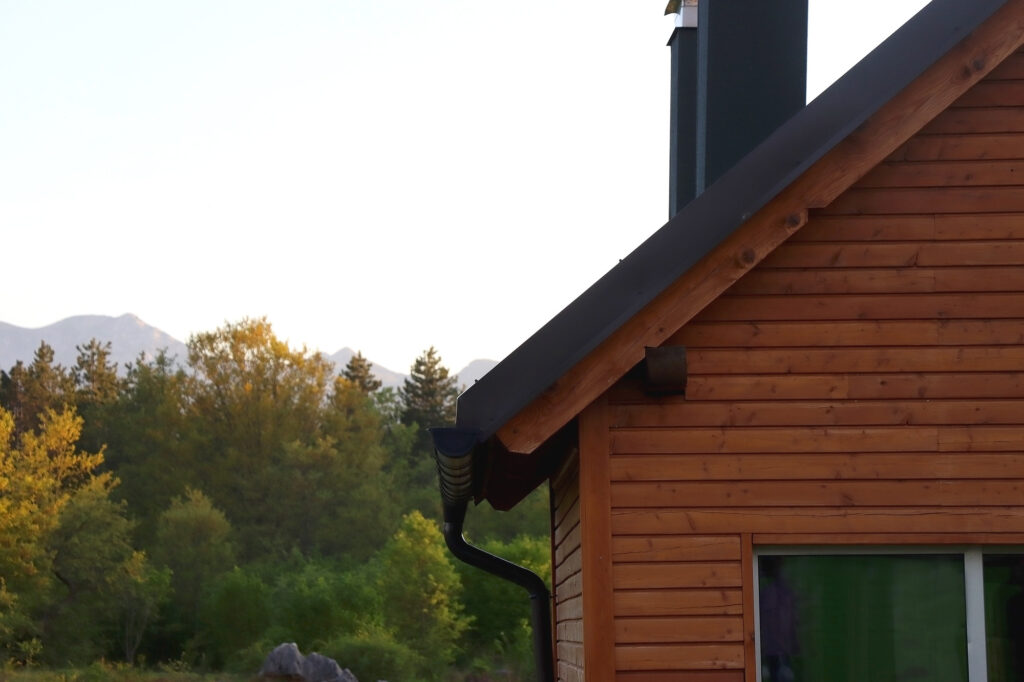
Pros:
One of the biggest draws of natural wood siding is its very specific patina. Over time, the color will begin to experience variation due to its exposure to the elements. The most common example is with cedar shake siding, which is common in beach towns and homes near water. The natural browns of the wood will eventually turn grey, something that can’t be replicated with a vinyl equivalent.
However, if homeowners are looking for the style of cedar shake and aren’t married to the patina, a vinyl or veneer option will provide the same look, but more long-lasting.
Wood siding does require continuous maintenance, including coats of paint or stain.
Cons:
Wood siding is susceptible to rotting, primarily caused by moisture infiltration — although cedar will not rot the same way as other types of wood because if its natural preservatives. Signs of rot include soft or spongy areas, discoloration, or a musty odor. If rot is limited to a small area, it may be possible to repair it by replacing the damaged boards. However, extensive rotting typically calls for complete siding replacement to prevent further damage and maintain structural integrity
Fiber Cement Board Siding

Pros:
Fiber cement board siding — which you might also know as James Hardie Board, a popular brand name — is a siding option that’s grown in popularity recently.
It’s made from a mixture of cement, sand, and cellulose fiber (which is fiberglass or another synthetic fiber), meaning it’s very durable and non-flammable.
It can resemble wood planks and wood shingles, and offers protection from insects and rotting.
Cons:
The labor and installation of fiber cement board siding is costly due to limited flexibility in the panels themselves. This requires the panels to be nailed differently when installed, and leads to more difficult replacement than vinyl siding if a panel is damaged.
While fiber cement siding might be more durable than vinyl siding, it could still crack.
Siding in need of an upgrade? Check out POWER’s siding services to learn more about if our offerings are right for you.
Back to News
